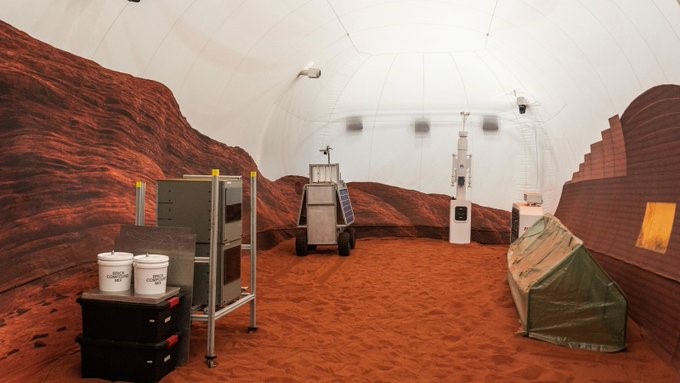NASA introduced its new Mars-simulation habitat on Tuesday. With four small rooms, a gym, and a lot of red sand, in which volunteers will live for a year at a time to test. On which what life will be like on future expeditions to Earth’s neighbour.
The Crew Health and Performance Exploration Analog (CHAPEA) laboratory was built for three planned tests. At the US space agency’s large research site in Houston, Texas.
This summer, four volunteers will begin the first trial. During which NASA will evaluate their physical and mental health to better understand humans.’ An endurance for such prolonged isolation.
NASA will use the data to better understand humans’ “resource use” on Mars. According to Grace Douglas, chief researcher on the CHAPEA trials.
“We can really begin to understand how we’re supporting them with what we’re providing them,” she said during a press tour of the habitat.
She emphasised that such a long-distance mission had “very strict mass limitations.”
The volunteers will reside in “Mars Dune Alpha,” a 1,700 square-foot (160 square-meter) dwelling with two bathrooms. Along with vertical garden to cultivate lettuce. A space dedicated to medical care, a leisure area, and many workstations.
An airlock leads to a “outdoor” recreation of the Martian environment. However it is still contained within the hangar.
A weather station, a brick-making machine, and a miniature greenhouse are among the items spread about the red sand-covered floor. That astronauts are likely to utilize.
To imitate the lower gravity
There is also a treadmill where the pretend astronauts will walk hung from straps to imitate the lower gravity of Mars.
“We can’t have them walking in circles for six hours,” remarked Suzanne Bell, director of NASA’s Behavioral Health and Performance Laboratory.
According to her, four volunteers will use the treadmill to replicate long treks outside to collect samples. Gather data, or create infrastructure.
Moreover, the initial experiment team members have yet to be identified. But the agency indicated that selection “will follow standard NASA criteria for astronaut candidate applicants.” In addition with a strong emphasis on expertise in science, technology, engineering, and maths.
The crew’s reaction to stressful events, such as limited water availability or equipment failure, will be tested on a regular basis by researchers.
Another unique element of the NASA Mars-simulation habitat is that it was 3D-printed.
“That is one of the technologies that NASA is investigating as a potential for building habitat on other planetary or lunar surfaces,” Douglas explained.
NASA is in the early phases of planning a Mars expedition, but the agency’s primary attention is on the impending Artemis missions, which aim to return humans to the Moon for the first time in half a century.
